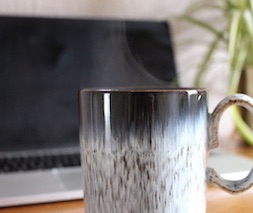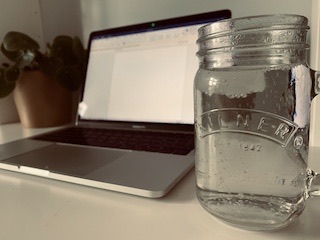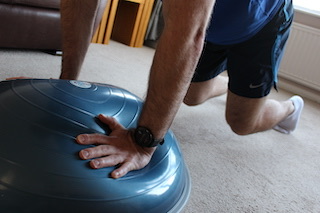
Whether you’re working from home, or still going into your usual workplace, most peoples’ working lives have been influenced by Covid-19. This is something we’ve discussed with lots of professionals, parents and carers we work with, so we thought it might be useful to share some ideas!
Think about your Commute
For many of us, our commute is more than simply getting to and from work. We might use this time to think, read, listen to music, or call a friend or family member. So it’s really, really important to think about making our own commute – even if we don’t actually need to travel anywhere anymore!
If we had a short commute to an office or place of work which was 10 or 15 minutes each way, we wouldn’t think anything of it. Somehow, when we’re working from home, protecting that short amount of time can sometimes seem too much to manage consistently!

If you don’t have a commute, what do you do before and after work to signify the beginning and end of your working day? Can you go for a walk around the block or your garden, or have some time to think, perhaps use some guided meditation?
If you do have a commute, how can you best use this? Music can be a really powerful way to regulate our nervous system- do you have playlists you can listen to? A high tempo beat is alerting, a slow tempo is often more calming. Nature sounds have been shown to reduce stress levels. Listening to audiobooks or Podcasts are also a good way to calm, focus, and attend to something you’re interested in; this also means you can choose when you listen to the news and current affairs, as opposed to perhaps on the radio, where you may at the mercy of News updates which might be stressful to you. Finally, think about your commute ‘environment’ – if you commute in a car, what do you have available which is regulating for you? Snacks, mints, hand cream? If you commute by walking, do you have a comfortable hat, scarves and gloves to keep warm with?
Think about the Power of Food and Drink
Take a look at these brilliant resources on using food and drink to regulate by our colleagues at Adoption 360 here, and broader principles and things to keep in mind on the Sensory Attachment Intervention website here.
 If you are overwhelmed, tired, lethargic, have food and drinks that might alert you-
If you are overwhelmed, tired, lethargic, have food and drinks that might alert you-
- Sparkling water
- Fresh mint to put into ice cold water
- A segment of orange
If you are feeling stressed, distractible, or agitated, food and drinks which are crunchy or chewy can be calming
- Chewy cereal bars
- Almonds or Brazil nuts
- A smoothie (especially though a straw!)
Take 5 minutes away from your screen and be present whilst you’re having a snack or something to drink, instead of eating and drinking as you’re working. Just those 5 minutes can help you check in with your body and mind, and reset for the next hour!
Use Movement
Sitting on a chair for prolonged periods of time can have an impact on our posture, concentration, comfort – and long term health! Simple movements and stretches (which don’t need equipment) can help to give us time to check in with ourselves. Squeeze and release, move your joints.
 If you’re agitated, try and make your arms or your body as wide as you can, as slowly as you can, for as long as you can (this engages your Proprioceptive sense, which is both calming and organising). Keep your movements slow, and controlled, like you’re pushing away 2 walls which are coming in towards you. Repeat this guiding your arms upwards, as if you are assertively pushing the roof away – slowly, and using controlled movements. If you can get on the floor, have a go at push-ups, planks, or mountain climbers!
If you’re agitated, try and make your arms or your body as wide as you can, as slowly as you can, for as long as you can (this engages your Proprioceptive sense, which is both calming and organising). Keep your movements slow, and controlled, like you’re pushing away 2 walls which are coming in towards you. Repeat this guiding your arms upwards, as if you are assertively pushing the roof away – slowly, and using controlled movements. If you can get on the floor, have a go at push-ups, planks, or mountain climbers!
If you’re overwhelmed, then try shaking out your arms and legs one-by-one. Try briskly rubbing your hands, arms and legs. Go for a walk, and come back to your desk (faster, larger movements are often more alerting).
Think about Your Space
Comfort While Working
The most important thing to think about is your posture, for your long term wellbeing; you can take a look at NHS recommendations for your sitting position.
You might benefit from taking breaks from a chair by sitting on a gym ball – this should be at the right height (so your thighs are parallel to the floor, and your elbows should be about the same height as your worktop when your arms are down). When you’re sitting on a gym ball, you can bounce slightly, or adjust your position by moving side to side whilst at your desk.
Think about the sensation of your feet flat on the floor – are you more comfortable with your shoes on or off? Do you prefer a soft surface, such as a textured rug, or a solid floor surface such as a hard floor or mat?
Physical Boundaries
You should ideally have a dedicated place to work (and store your work!)- this helps you to adapt the space how you need to concentrate, and also allows you time to relax and enjoy doing other things when you’re not working! If you don’t have space for this, try and make a real effort to take 5 minutes at the beginning and end of the day to unpack, and then repack your work things away, in an organised way.
Being Mindful of Time
 It can be really tempting to try and do EVERYTHING at once when you’re working from home. Do the washing, prepare dinner, finish your emails- the list could be endless! Equally, because you’re just in one place you may experience overwhelm, and struggle to get anything started at all – in your work or in your home. Use your ‘commute time’ (whether you have a commute or not!) to end your working day with a transition which allows you to leave work and be ‘home’. Maybe have a cup of tea in the garden, or go and walk the dog- when you return you are in your ‘non-working’ mode.
It can be really tempting to try and do EVERYTHING at once when you’re working from home. Do the washing, prepare dinner, finish your emails- the list could be endless! Equally, because you’re just in one place you may experience overwhelm, and struggle to get anything started at all – in your work or in your home. Use your ‘commute time’ (whether you have a commute or not!) to end your working day with a transition which allows you to leave work and be ‘home’. Maybe have a cup of tea in the garden, or go and walk the dog- when you return you are in your ‘non-working’ mode.
Bring a piece of nature into your workplace with you; something seasonal which connects you with outside. You might cut some flowers or leaves from your garden, herbs, or at the moment – conkers! This means you’re not in a ‘work vacuum’ during the day, and have lots of cues to prompt you to get out into nature at the end of your day!
Build Supportive Habits
Habits are an accumulation of repeated experiences. We always think of habits as being negative, but this isn’t the case! The more habitual our behaviour is, the more automatic it becomes. We want positive habits to become a part of our daily routine, to help us, protect us, and nourish us! Small, simple baby steps are the best way to establish positive habits – whatever you think you would like to work towards, break it down into tiny steps and build it up slowly.
What might your habits be?
- I take 10 minutes before I begin each work day to stretch
- I drink a glass of water twice in the morning and twice in the afternoon to stay hydrated
- I turn off my work phone at 6pm each day
Think about what might make the most difference to you – make sure you are aiming for small, achievable habits which you can build on gradually!
